-
 Bitcoin
Bitcoin $118400
-0.80% -
 Ethereum
Ethereum $3596
-2.37% -
 XRP
XRP $3.217
-9.51% -
 Tether USDt
Tether USDt $1.000
0.02% -
 BNB
BNB $772.6
-0.15% -
 Solana
Solana $188.6
-5.66% -
 USDC
USDC $0.9999
0.01% -
 Dogecoin
Dogecoin $0.2426
-7.72% -
 TRON
TRON $0.3096
-1.18% -
 Cardano
Cardano $0.8165
-7.98% -
 Hyperliquid
Hyperliquid $43.76
-1.39% -
 Stellar
Stellar $0.4266
-9.57% -
 Sui
Sui $3.706
-6.29% -
 Chainlink
Chainlink $18.03
-6.17% -
 Hedera
Hedera $0.2481
-8.23% -
 Bitcoin Cash
Bitcoin Cash $513.1
-1.17% -
 Avalanche
Avalanche $23.88
-4.61% -
 Litecoin
Litecoin $112.7
-4.51% -
 UNUS SED LEO
UNUS SED LEO $8.963
-0.11% -
 Shiba Inu
Shiba Inu $0.00001397
-7.98% -
 Toncoin
Toncoin $3.169
-6.65% -
 Ethena USDe
Ethena USDe $1.001
0.01% -
 Polkadot
Polkadot $4.156
-5.72% -
 Uniswap
Uniswap $10.06
-4.32% -
 Monero
Monero $315.9
-2.33% -
 Bitget Token
Bitget Token $4.668
-2.88% -
 Pepe
Pepe $0.00001280
-6.97% -
 Dai
Dai $0.9999
0.02% -
 Aave
Aave $290.5
-4.57% -
 Bittensor
Bittensor $426.9
-2.77%
Is there a limit on the number of nodes in a private chain, the more the better?
In private chains, more nodes enhance decentralization and security but increase complexity and resource needs; the optimal number depends on specific use cases and requirements.
May 17, 2025 at 11:57 pm
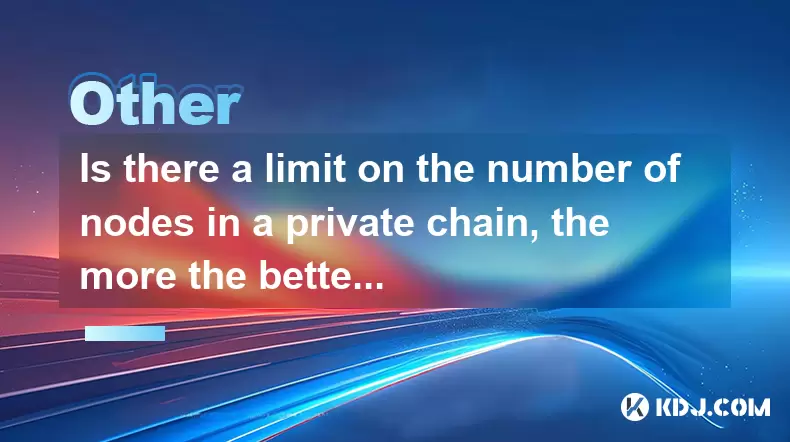
Understanding Private Chains and Node Limits
In the world of cryptocurrencies, private chains, also known as permissioned blockchains, are networks where access is restricted to a select group of participants. One of the key components of any blockchain, including private chains, is the node. Nodes are essentially computers that maintain a copy of the blockchain and participate in the network's operations. A common question that arises is whether there is a limit on the number of nodes in a private chain and whether having more nodes is always beneficial.
What is a Node in a Private Chain?
A node in a private chain is a computer that runs the blockchain software and is responsible for validating transactions, maintaining the ledger, and ensuring the integrity of the network. In a private chain, nodes are typically operated by known and trusted entities, which can be organizations or individuals granted permission to join the network.
Is There a Limit on the Number of Nodes?
There is no inherent technical limit on the number of nodes that can be added to a private chain. The scalability of a private chain is largely determined by the underlying infrastructure and the specific blockchain platform being used. For instance, platforms like Hyperledger Fabric or Corda are designed to handle a large number of nodes efficiently.
However, practical considerations can impose limits. The more nodes you add, the more complex the network management becomes. Each additional node requires resources such as bandwidth, storage, and computational power. Additionally, the consensus mechanism used in the private chain can impact the scalability. Some consensus mechanisms are more efficient with a larger number of nodes, while others may struggle.
The Benefits of More Nodes
Adding more nodes to a private chain can offer several benefits. Increased decentralization is one of the primary advantages. With more nodes, the network becomes less vulnerable to single points of failure and potential attacks. This can enhance the security and resilience of the blockchain.
Improved performance is another potential benefit. In some cases, having more nodes can lead to faster transaction processing and better overall network performance. This is particularly true for networks that use sharding or other techniques to distribute the workload across multiple nodes.
The Drawbacks of More Nodes
Despite the benefits, there are also drawbacks to consider when increasing the number of nodes in a private chain. Increased complexity in network management is a significant concern. More nodes mean more points of interaction, which can lead to increased administrative overhead and potential issues with network synchronization.
Higher resource requirements are another consideration. Each node requires hardware and software resources, and as the number of nodes grows, so does the cost of maintaining the network. This can be a significant barrier for smaller organizations or those with limited budgets.
Balancing Node Count and Network Efficiency
Finding the right balance between the number of nodes and network efficiency is crucial for the success of a private chain. The optimal number of nodes depends on the specific use case and requirements of the network. For some applications, a smaller number of highly reliable nodes may be sufficient, while others may benefit from a larger, more decentralized network.
When deciding on the number of nodes, it's important to consider factors such as the expected transaction volume, the desired level of security, and the available resources. Conducting thorough testing and simulations can help determine the ideal configuration for your private chain.
Practical Considerations for Adding Nodes
Adding nodes to a private chain involves several steps and considerations. Here's a detailed look at the process:
Assess Network Requirements: Before adding nodes, evaluate the current performance and capacity of your network. Determine if additional nodes are necessary to meet your goals.
Select Node Hardware: Choose hardware that meets the requirements of your blockchain platform. This may include servers with sufficient CPU, RAM, and storage capacity.
Install and Configure Software: Install the blockchain software on the new nodes. This typically involves downloading the software from the platform's official repository and following the installation instructions.
Integrate with Existing Network: Configure the new nodes to connect to the existing network. This may involve setting up network connections, configuring firewalls, and ensuring that the nodes can communicate with each other.
Test and Validate: After adding the new nodes, conduct thorough testing to ensure that they are functioning correctly and that the network remains stable. This may involve running test transactions and monitoring network performance.
Monitor and Maintain: Once the nodes are operational, ongoing monitoring and maintenance are essential. This includes regular updates to the software, monitoring for performance issues, and ensuring that the nodes remain secure.
Frequently Asked Questions
Q: Can the number of nodes in a private chain be dynamically adjusted?
A: Yes, the number of nodes in a private chain can be dynamically adjusted. However, this requires careful planning and execution to ensure that the network remains stable and secure. Adding or removing nodes should be done in a controlled manner, with thorough testing and validation.
Q: How does the consensus mechanism affect the optimal number of nodes?
A: The consensus mechanism used in a private chain can significantly impact the optimal number of nodes. Some consensus mechanisms, such as Proof of Authority (PoA), are more efficient with a smaller number of nodes, while others, like Practical Byzantine Fault Tolerance (PBFT), can handle a larger number of nodes but may require more resources.
Q: What are the security implications of having more nodes in a private chain?
A: Having more nodes can enhance the security of a private chain by increasing decentralization and reducing the risk of single points of failure. However, it also increases the attack surface, as each node represents a potential entry point for malicious actors. Therefore, robust security measures, such as encryption and access controls, are essential to protect the network.
Q: Can a private chain with too many nodes become inefficient?
A: Yes, a private chain with too many nodes can become inefficient. The increased complexity of managing a large number of nodes can lead to slower transaction processing and higher resource consumption. It's important to find the right balance between the number of nodes and the network's performance requirements.
Disclaimer:info@kdj.com
The information provided is not trading advice. kdj.com does not assume any responsibility for any investments made based on the information provided in this article. Cryptocurrencies are highly volatile and it is highly recommended that you invest with caution after thorough research!
If you believe that the content used on this website infringes your copyright, please contact us immediately (info@kdj.com) and we will delete it promptly.
- Crypto for the Clueless: Understanding Digital Assets for Non-Investors
- 2025-07-24 04:30:12
- Chainlink (LINK) Price Breakout: Bullish Signals and Tokenization Trends
- 2025-07-24 02:50:12
- Chasing 1000x Gains: Your Summer Crypto Investment Guide
- 2025-07-24 02:50:12
- Bitcoin, Pepe Dollar, and Meme Utility: A New Wave in Crypto?
- 2025-07-24 02:30:13
- BNB's Bullish Momentum: Riding the Market Recovery Wave
- 2025-07-24 03:30:12
- FLR Price, SparkDEX, and Token Launch: What's the Buzz?
- 2025-07-24 03:30:12
Related knowledge
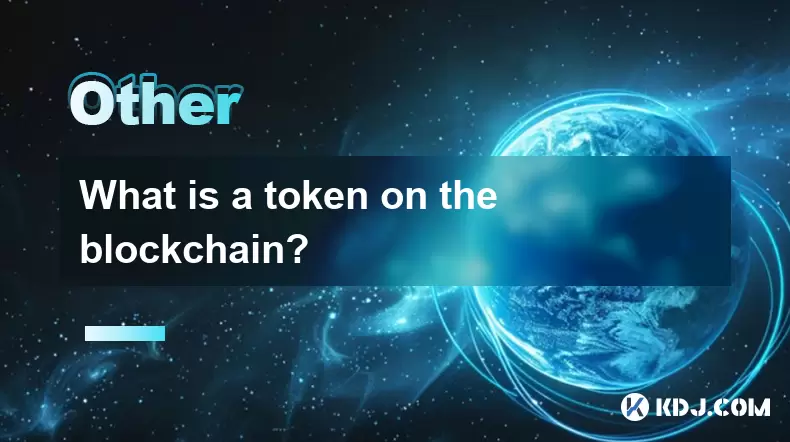
What is a token on the blockchain?
Jul 21,2025 at 07:00am
Understanding the Concept of a TokenIn the realm of blockchain technology, a token is a digital representation of an asset or utility that exists on a...
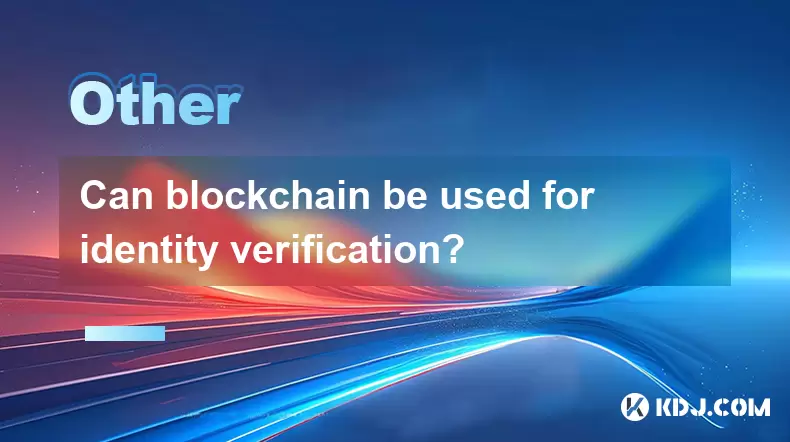
Can blockchain be used for identity verification?
Jul 18,2025 at 02:14pm
Understanding Identity Verification in the Digital AgeIn the modern digital landscape, identity verification has become a critical component for ensur...
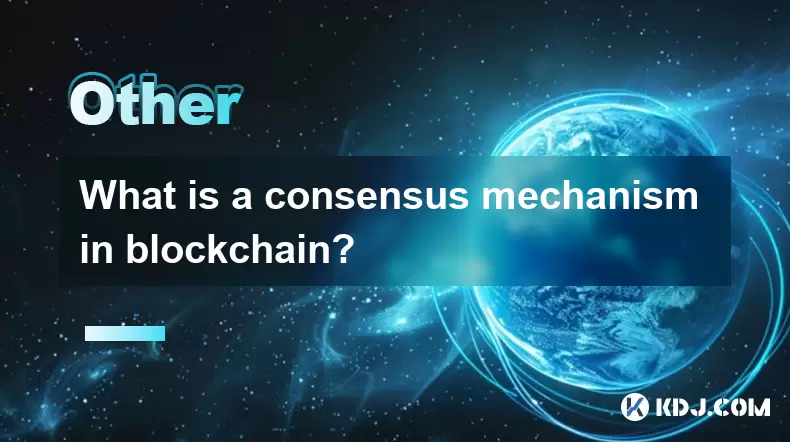
What is a consensus mechanism in blockchain?
Jul 21,2025 at 03:01am
Understanding the Basics of Consensus MechanismsA consensus mechanism is a critical component of any blockchain network. It refers to the process by w...
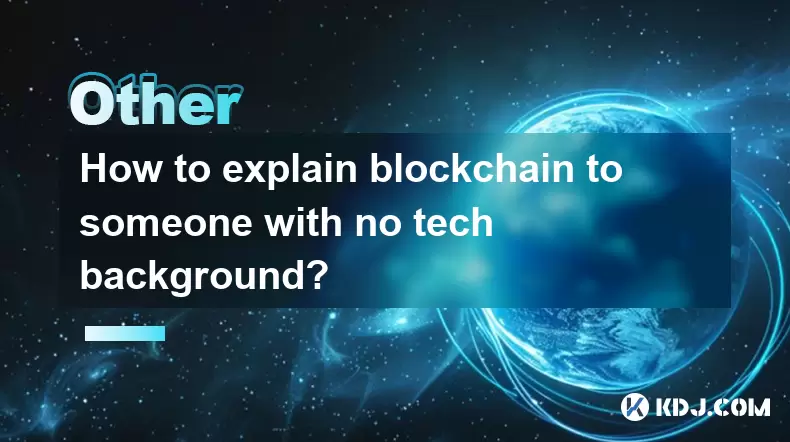
How to explain blockchain to someone with no tech background?
Jul 18,2025 at 11:08pm
Understanding the Basics of BlockchainTo explain blockchain to someone with no tech background, it's essential to start with simple analogies and avoi...

Who invented blockchain technology?
Jul 23,2025 at 01:28am
Origins of Blockchain TechnologyBlockchain technology did not emerge from a single inventor or institution. Instead, it evolved through a series of ac...
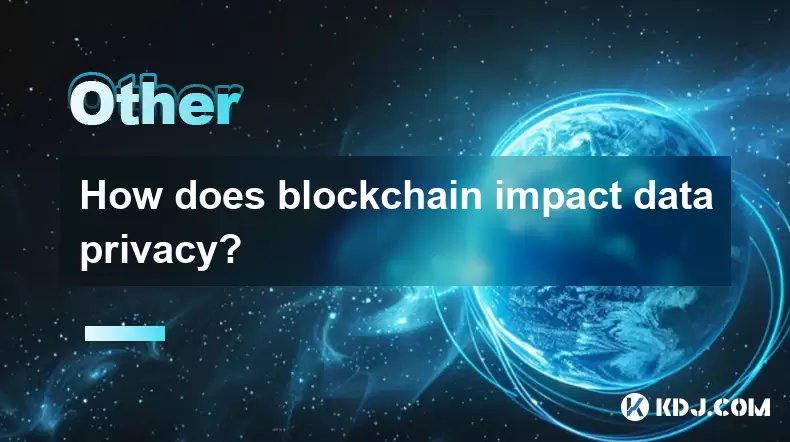
How does blockchain impact data privacy?
Jul 21,2025 at 02:21pm
Understanding the Role of Blockchain in Data PrivacyBlockchain technology, originally developed as the underlying infrastructure for cryptocurrencies ...

What is a token on the blockchain?
Jul 21,2025 at 07:00am
Understanding the Concept of a TokenIn the realm of blockchain technology, a token is a digital representation of an asset or utility that exists on a...

Can blockchain be used for identity verification?
Jul 18,2025 at 02:14pm
Understanding Identity Verification in the Digital AgeIn the modern digital landscape, identity verification has become a critical component for ensur...

What is a consensus mechanism in blockchain?
Jul 21,2025 at 03:01am
Understanding the Basics of Consensus MechanismsA consensus mechanism is a critical component of any blockchain network. It refers to the process by w...

How to explain blockchain to someone with no tech background?
Jul 18,2025 at 11:08pm
Understanding the Basics of BlockchainTo explain blockchain to someone with no tech background, it's essential to start with simple analogies and avoi...

Who invented blockchain technology?
Jul 23,2025 at 01:28am
Origins of Blockchain TechnologyBlockchain technology did not emerge from a single inventor or institution. Instead, it evolved through a series of ac...

How does blockchain impact data privacy?
Jul 21,2025 at 02:21pm
Understanding the Role of Blockchain in Data PrivacyBlockchain technology, originally developed as the underlying infrastructure for cryptocurrencies ...
See all articles

























































































